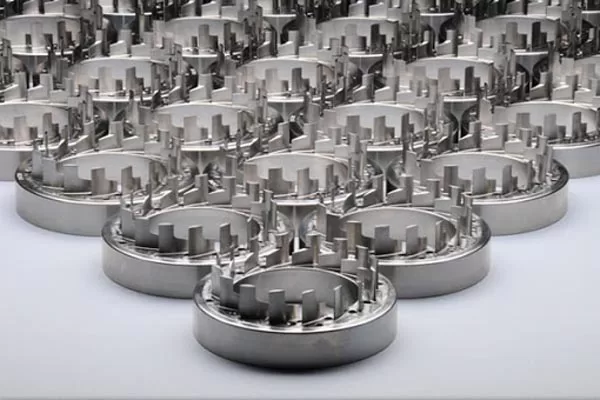In the early days of manufacturing, every single piece was made one by one by a skilled craftsman. However, the demand for products has led factories to manufacture products faster and cheaper in the form of high volume manufacturing. Nowadays, a high number of production facilities worldwide are engaged in mass production.
But what about the demands for low volume production in tens, hundreds, or thousands? Is there a way for the manufacturing industry to accommodate them? The answer is yes. Low volume manufacturing is common in industries like in making medical devices. This concept is common in manufacturing products for testing and clinical trials before going into full production.
In this article, we are going to discuss the benefits of low volume manufacturing and how it has thrived despite the demand for high volume manufacturing.

High volume production parts
The Benefits of Low Volume Manufacturing
Even with the popularity of digital technology, low volume manufacturing persisted as an option regardless of the timeline and quantity. This production method offers diminishing risk, ensuring quality, and faster time to market. Here are the benefits of low volume manufacturing.
1. Cost Savings
Margins are important for manufacturers. You need to deliver products on-time at a manageable cost and at a price point that will work for your customers and you. It seems hard, but when you rethink your manufacturing process, it is possible.
That is one of the benefits of low volume manufacturing. It provides an opportunity for cost savings by using digital technology instead of hard work.
2. Design Freedom
Changing the design and material of a product can be costly. Thanks to digital technology, like 3D printers it has opened new doors to produce prototypes and manufacture a product. It has replaced the limiting molds with design and manufacturing flexibility.
Through rapid prototyping, you can easily make changes, quickly respond to feedback, use new materials, and fix the design flaws. It also has better products, less waste, greater efficiencies, and smarter design.
3. Faster to Market
In this competitive environment, manufacturers need to get their products to the market first to get ahead. Not only do you need to bring the products to the market first, but you also need to bring high-quality products at the correct price. The limitations of high volume production will not let this happen. Low volume manufacturing, however, can produce a smaller quality of products at a shorter timeline.
Through this production method, you can beat your competitors with products at a reduced cost and much less risk. As such your customer will be happier and you can respond to the latest trends in your industry.
4. Bridge Production Faster and Better
The last benefit of low volume production is it serves as a bridge between prototype and production. You can get your product in front of your potential customers, get their feedback, and test if the product meets the industry standards. When the design is validated, you can quickly go into production. It provides you with design and manufacturing capabilities to meet the demands of your customers.
Conclusion
Low volume manufacturing serves as the link between prototyping and mass production. It also ensures a smooth transition from the first one to the next. You can use this manufacturing method to produce small batches and prototyping for performance testing and preliminary verification,
we are going to discuss the advantages of low volume manufacturing and how it has thrived despite the demand for high volume manufacturing.
